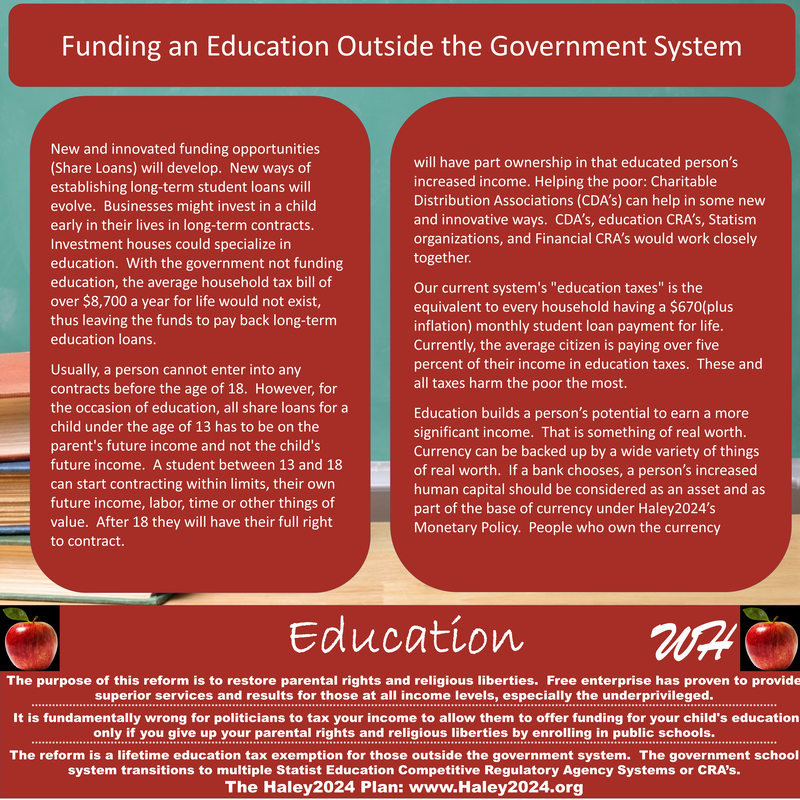Expense and Funding
| New and innovated funding opportunities(Share Loans) will develop. New ways of establishing long-term student loans will evolve. Businesses might invest in a child early in their lives in long-term contracts. Investment houses could specialize in education. With the government not funding education, the average household tax bill of over $8,700 a year for life would not exist, thus leaving the funds to pay back long-term education loans |
| Usually, a person cannot enter into any contracts before the age of 18. However, for the occasion of education, all share loans for a child under the age of 13 has to be on the parent's future income and not the child's future income. A student between 13 and 18 can start contracting within limits, their own future income, labor, time or other things of value. After 18 they will have their full right to contract. |
| Helping the poor: Charitable Distribution Associations (CDA’s) can help in some new and innovative ways. CDA’s, education CRA’s, Statism organizations, and Financial CRA’s would work closely together. Our current system's "education taxes" is the equivalent to every household having a $670(plus inflation) monthly student loan payment for life. Currently, the average citizen is paying over five percent of their income in education taxes. These and all taxes harm the poor the most. |
| Education builds a person’s potential to earn a more significant income. That is something of real worth. Currency can be backed up by a wide variety of things of real worth. If a bank chooses, a person’s increased human capital should be considered as an asset and as part of the base of currency under Haley2024’s Monetary Policy. People who own the currency will have part ownership in that educated person’s increased income. |





